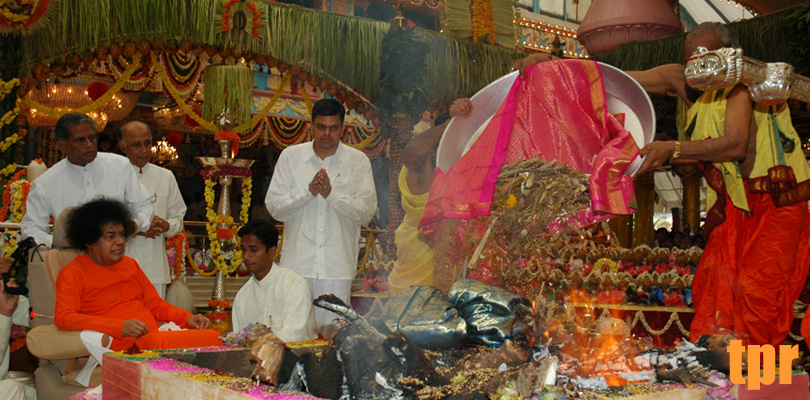Ati Rudra Maha Yajnam is a very important form of worship of Lord Siva, the very Source of Cosmic Energy for the entire creation. His Divine form encompasses and extends far beyond all known and unknown galaxies and universes. Lord Siva Is omnipotent, omniscient and omnipresent and Is the conqueror of death and an embodiment of infinite mercy, compassion and love. Lord Siva Is worshipped traditionally in the form of Linga – resembling the replica of Brahmanda. Abhisheka is the ritual dearest to His heart.

Ati Rudram involves 14641 Rudrams (Rudram is a combination of Namakam and Chamakam given in Rudradhyayam in the 5th Prapathakam of the 4th Kanda of Krishna Yajur Veda Samhita). Namaka recited once along with recital of Chamaka once constitutes one Rudram. Recital of 11 Namakas along with one Anuvaka of Chamaka at the end of each Namaka, thus completing one Chamaka constitutes Ekadasa Rudram. Recital of 11 Ekadasa Rudrams is Laghu Rudram or Rudraikadasini. Recital of 11 Laghu Rudrams is one Maha Rudram. Recital of 11 Maha Rudrams is one Ati Rudram. Therefore, in Ati Rudram, 14641 Rudrams include 14641 Namakams and 1331 Chamakams. Simultaneously, with Rudrabhisheka, Rudra Homas are conducted by 121 priests well versed in Vedic rituals, in 11 Homa Kundas erected for the purpose. A Linga is being installed especially for the purpose of conducting Rudrabhishekam daily. Side by side the Rudra Parayanas and Rudra Homas, other related rituals such as Sri Sai Gayatri Homas, Lingabhisheka Poojas, Kramarchana Parayanas and Tarpanas will also be performed.

This Maha Yajna is being performed for Loka Kalyana and good of all mankind as well as to ensure Universal Peace and prosperity. It is, indeed, our good fortune that such a grand Vedic ritual is being performed in a selfless manner in the Divine Presence of Bhagawan, the very embodiment of Siva-Sakti form of Absolute Cosmic Energy in its entirety.
Ati Rudra Maha Yajna was conducted twice before, in Bhagawan’s physical prsesence, at Prasanthi Nilayam in 2006 and at Sundaram, Chennai in 2007.
II Samastha Lokah Sukhino Bhavantu II